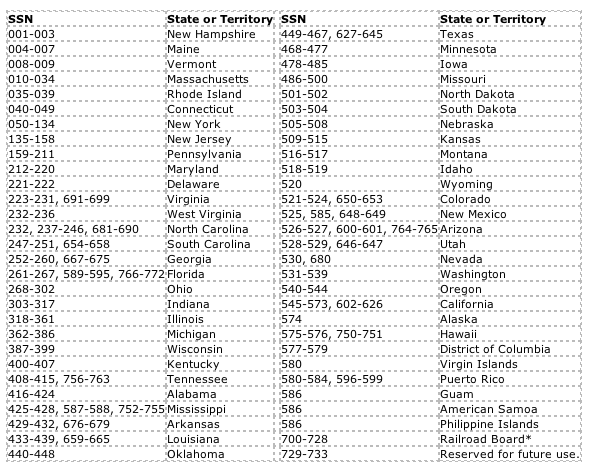The Social Security Death Master File (DMF, also popularly called the Social Security Death Index, or SSDI) is used by the Social Security Administration for coordinating benefits. Understanding the history of the DMF and what it is (and isn’t) can help you get the best use of the database.
The Social Security Death Master File (DMF, also popularly called the Social Security Death Index, or SSDI) is used by the Social Security Administration for coordinating benefits. Understanding the history of the DMF and what it is (and isn’t) can help you get the best use of the database.
The Social Security Act was signed in 1935, and the Social Security Board started building the infrastructure for distributing benefits. Registration began in 1936 and 30 million individuals were registered and cards distributed by 1937. These cards were distributed through employers, who had employees fill out the information, then returned the cards to the government.
Federal Insurance Contributions Act taxes were collected beginning in 1937. Lump-sum payments were made for the first five years. After deposits had accumulated during that time, monthly distributions started in 1942.
Form SS-5 is used to apply for an SSN. In 1936, the form had 16 questions:
- First, Middle, and Last Names
- Street and number
- Post Office
- Business name of present employer
- Business address of present employer
- Age at last birthday
- Date of birth
- Place of birth
- Father’s full name
- Mother’s full maiden name
- Sex: Male/Female
- Race: White/Negro/Other
- If registered with U.S. Employment Service, give number of registration card
- If you have previously filled out a card like this, state place and date
- Date signed
- Employee’s signature, as usually written
You can see an example of the original SS-5, and the accompanying instructions for filling out the form, on the Social Security Administration’s website. You can also see the current version of SS-5.
Researchers can order copies of the SS-5 form for deceased individuals can be ordered from the SSA. As of January 2011, the cost of an SS-5 photocopy is $27 if the SSN is provided, and $29 if it is not provided. Details about ordering are available on the SSA website.
The Social Security Board quickly established registration offices to handle the registration of individuals and the assignment of Social Security numbers (SSN). In 1972, assignment of the numbers was centralized in the Baltimore office. More than 450 million numbers have been issued to date, and none is ever replicated. Each SSN has nine digits, subdivided into three groups:
- Area Number (three digits)
- Group Number (two digits)
- Serial Number (four digits)
The first group is the one most pertinent to genealogical research. This is the area number. Each state was assigned groups of numbers.

This number does not necessarily reflect the state of residence of the individual. Since the beginning, one could always register for an SSN at any office. Prior to 1972, the area number reflects the state in which the office where one registered was located. Although a resident of Massachusetts, the closest office to me was across the border in Rhode Island. Had I registered prior to 1972, my area number would be between 035 and 039.
The rules changed once assignment was centralized in 1972. From that point forward, the number was assigned based on the zip code in the mailing address for the individual. Once again, this may not necessarily be the state of residence.
Numbers between 700 and 728 were assigned to the Railroad Retirement Board (RRB). The RRB was created a year earlier than Social Security to deal specifically with retirement benefits for those working in the rail industry. Because these individuals did not receive benefits from the SSA, earlier deaths do not appear in the DMF. Records of the RRB start in 1936, and are accessed through the National Archives. More information is available on the RRB website.
In an effort to prolong the use of nine-digit SSNs, and for security purposes, the Social Security Administration began a new process on June 25, 20011. The “SSN Randomization” methodology now renders this number useless for determining the location of registration.
